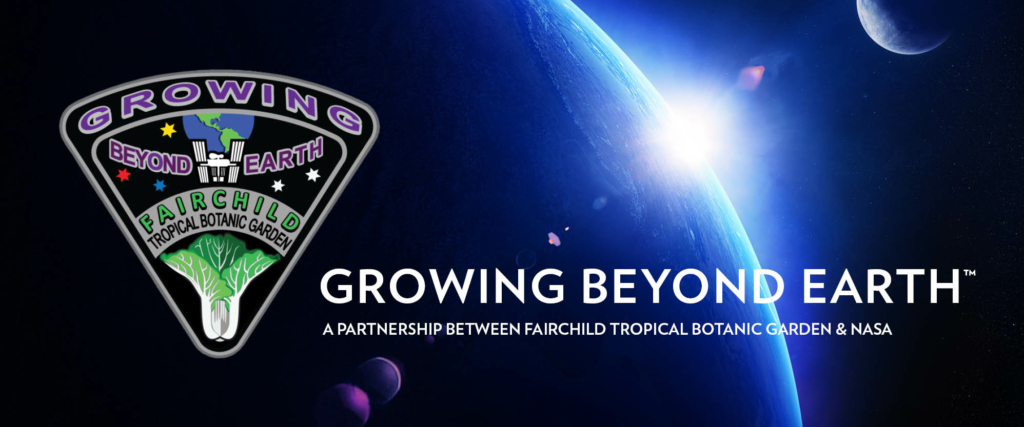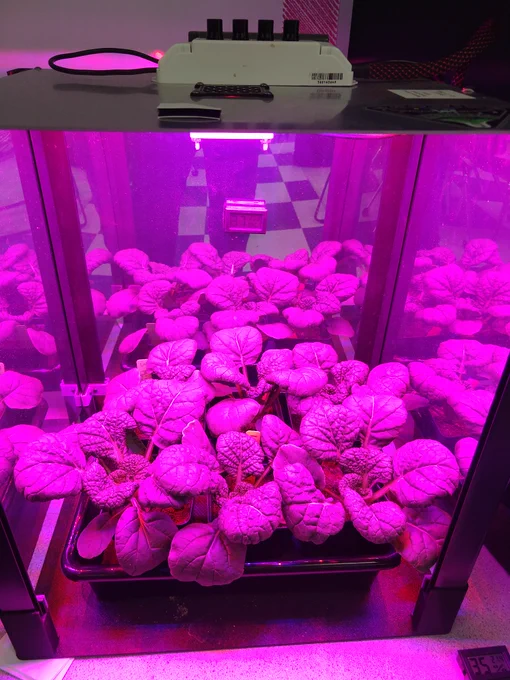As NASA looks toward a long-term human presence beyond Earth’s orbit, there are specific science, technology, engineering, and math (STEM) challenges related to food production in space. Established in 2015 as a partnership between Fairchild Tropical Botanic Garden and NASA’s Exploration Research and Technology Programs, Growing Beyond Earth (GBE) enables student community scientists to actively contribute data toward NASA mission planning.
Leafy greens are a rich source of vital nutrients often absent in the conventional prepackaged astronaut meals. Our experiment aims to assess the potential of select leafy green cultivars for space-based cultivation. These specific varieties underwent preliminary testing in the Growing Beyond Earth schools during 2015 and 2016 using an earlier GBE kit model. With advancements in technology, we’re revisiting these cultivars to gauge their performance under improved conditions.
On the International Space Station (ISS), resources for growing plants are limited. In closed system agriculture, every gram, ml, and kilowatt is accounted for. This year, NASA scientists need your help to determine the optimal light solution for maximizing plant growth while minimizing the input of the other resources e.g. plants prefer certain wavelengths to grow. To produce those wavelengths more or less electricity is needed to have plants grow faster but also more water is needed to increase the yield. The comparison of hours/g or liters/g are great factors to compare the yields exposed to different environmental conditions. As with all GBE trials, this trial will require very detailed and accurate data collection and note-taking.
Cultivar Testing Research Protocols
A medida que la NASA mira hacia una presencia humana a largo plazo más allá de la órbita de la Tierra, existen desafíos específicos de ciencia, tecnología, ingeniería y matemáticas (STEM, por sus siglas en inglés) relacionados con la producción de alimentos en el espacio. Establecido en 2015 como una asociación entre el Jardín Botánico Tropical Fairchild y los Programas de Investigación y Tecnología de Exploración de la NASA, Growing Beyond Earth (GBE) permite a los científicos de la comunidad estudiantil contribuir activamente con datos para la planificación de misiones de la NASA.
Las verduras de hoja verde son una rica fuente de nutrientes vitales que a menudo están ausentes en las comidas convencionales preenvasadas de los astronautas. Nuestro experimento tiene como objetivo evaluar el potencial de cultivares de hojas verdes seleccionados para el cultivo basado en el espacio. Estas variedades específicas se sometieron a pruebas preliminares en las escuelas de Growing Beyond Earth durante 2015 y 2016 utilizando un modelo anterior de kit GBE. Con los avances tecnológicos, estamos revisando estos cultivares para medir su rendimiento en condiciones mejoradas.
En la Estación Espacial Internacional (ISS), los recursos para el cultivo de plantas son limitados. En la agricultura de sistema cerrado, se contabiliza cada gramo, ml y kilovatio. Este año, los científicos de la NASA necesitan su ayuda para determinar la solución de luz óptima para maximizar el crecimiento de las plantas y minimizar la entrada de otros recursos, por ejemplo, las plantas prefieren ciertas longitudes de onda para crecer. Para producir esas longitudes de onda, se necesita más o menos electricidad para que las plantas crezcan más rápido, pero también se necesita más agua para aumentar el rendimiento. La comparación de kwhoras/g o litros/g son grandes factores para comparar los rendimientos expuestos a diferentes condiciones ambientales. Al igual que con todos los ensayos de GBE, este ensayo requerirá una recopilación de datos y una toma de notas muy detalladas y precisas.
Cultivar Testing Research Protocols


